Related Research Articles

The L-Shaped Room is a 1962 British drama romance film directed by Bryan Forbes, based on the 1960 novel of the same name by Lynne Reid Banks. It tells the story of Jane Fosset, a young French woman, unmarried and pregnant, who moves into a cheap London boarding house, befriending a young man, Toby, in the building. The work is considered part of the kitchen sink realism school of British drama. The film reflected a trend in British films of greater frankness about sex and displays a sympathetic treatment of outsiders "unmarried mothers, lesbian or black" as well as a "largely natural and non-judgmental handling of their problems". As director, Forbes represents "a more romantic, wistful type of realism" than that of Tony Richardson or Lindsay Anderson.

Patricia Phoenix was an English actress who became one of the first sex symbols of British television through her role as Elsie Tanner, an original cast member of Coronation Street, a role which she portrayed from its first episode in 1960 until she quit the role in 1984.
Pik-Sen Lim is a Malaysian-British actress. According to the British Film Institute, Lim was "the most familiar Chinese actor on British television screens in the 1970s and 80s."
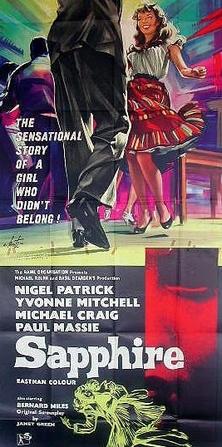
Sapphire is a 1959 British crime drama film directed by Basil Dearden and starring Nigel Patrick, Yvonne Mitchell, Michael Craig, and Paul Massie. A progressive film for its time, it focuses on racism in London toward immigrants from the West Indies, and explores the "underlying insecurities and fears of ordinary people" about those of another race.
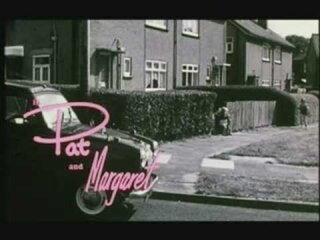
Pat and Margaret is a British television film written by comedian Victoria Wood. The story follows sisters Margaret, a cook, and Pat, a successful actress in the United States, after they are reunited on a television programme after spending 27 years apart. It stars Wood and her frequent comedy partner Julie Walters in the title roles, and features other past collaborators of Wood, including Thora Hird, Celia Imrie and Duncan Preston. First aired in 1994 on BBC One, the film was directed by Gavin Millar and produced by Ruth Caleb.
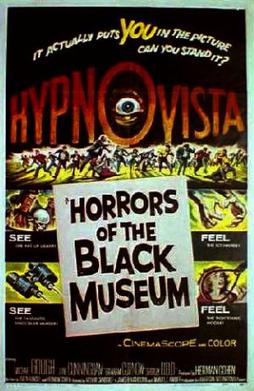
Horrors of the Black Museum (1959) is a British-American horror film directed by Arthur Crabtree and starring Michael Gough, June Cunningham, Graham Curnow and Shirley Anne Field.

Jean Kent, born Joan Mildred Field was an English film and television actress.
Trevor Laird is a British actor.
Sir Horace Shango Ové was a Trinidadian-born British filmmaker, photographer, painter and writer based in London, England. One of the leading black independent filmmakers to emerge in Britain in the post-war period, Ové was the first black British filmmaker to direct a feature-length film, Pressure (1976). In its retrospective documentary 100 Years of Cinema, the British Film Institute (BFI) declared: "Horace Ové is undoubtedly a pioneer in Black British history and his work provides a perspective on the Black experience in Britain."

London Belongs to Me is a British film released in 1948, directed by Sidney Gilliat, and starring Richard Attenborough and Alastair Sim. It was based on the novel London Belongs to Me by Norman Collins, which was also the basis for a seven-part series made by Thames Television shown in 1977.
Corinne Skinner-Carter is a Trinidadian actress, based in the United Kingdom. As Corinne Skinner, she began acting professionally in the 1950s. She has worked in black British film and television, and is possibly best known for her role as Audrey Trueman in BBC's EastEnders.
A Window in London is a 1940 British thriller film directed by Herbert Mason, written by Brigid Cooper and Ian Dalrymple for Greenspan & Seligman Enterprises Ltd and distributed by General Film Distributors. The cast includes Michael Redgrave, Patricia Roc, Sally Gray, Paul Lukas and Hartley Power. It is a remake of the French film Metropolitan (1939). The plot focuses on a man who becomes drawn to the wife of a jealous magician - after spotting what appears to be a murder in their flat.
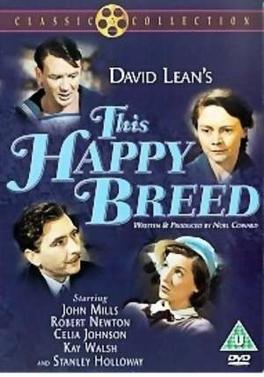
This Happy Breed is a 1944 British Technicolor drama film directed by David Lean and starring Robert Newton, Celia Johnson, Stanley Holloway and John Mills. The screenplay by Lean, Anthony Havelock-Allan and Ronald Neame is based on the 1939 play This Happy Breed, by Noël Coward. It tells the story of an inter-war suburban London family, set against the backdrop of what were then recent news events, moving from the postwar era of the 1920s to the inevitability of another war, and the passing of the torch from one generation to the next. Domestic triumphs and tragedies play against such transformative changes as the coming of household radio and talking pictures. The film was not released in the United States until April 1947.
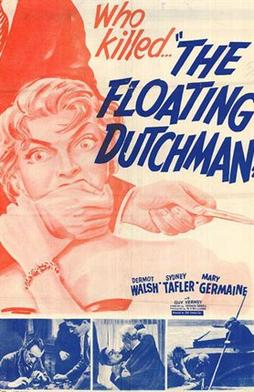
The Floating Dutchman is a 1954 British second feature crime film directed by Vernon Sewell and starring Dermot Walsh, Sydney Tafler and Mary Germaine. It is based on a 1950 novel of the same title by Nicholas Bentley. A Scotland Yard detective goes undercover amongst jewel thieves after a dead Dutchman is found floating in the river.

Pressure is a 1976 British drama film directed by Horace Ové and starring Herbert Norville, Oscar James and Frank Singuineau. Co-written by Ové with Samuel Selvon, it is hailed as the UK's first Black dramatic feature-length film, and has been characterised as "a gritty and dynamic study of a generation in crisis". Ové said in a 2005 interview: "What Pressure tried to do was to portray the experience of the Windrush generation, the kids who came with them and the kids born here."

Rage is a 1999 feature film directed and written by Nigerian-born Newton Aduaka. Rage is his debut feature. Fraser Ayres stars as Jamie, also known as Rage, a mixed-race, angry youth living on a grim council estate in South London. He is part of a rap trio with his two friends Godwin and Thomas. Looking to escape through their music, they turn to crime in order to finance making a record.

Imruh Bakari is a film maker and writer born in 1950 on St Kitts, who is also referred to as Imruh Bakari Caesar or Imruh Caesar. He currently teaches Film Studies at the University of Winchester. He works in the UK and a number of African countries in the area of culture and the creative industries.
The BFI Production Board (1964-2000) was a state-funded film production fund managed by the British Film Institute (BFI) and "explicitly charged with backing work by new and uncommercial filmmakers." Emerging from the Experimental Film Fund, the BFI Production Board was a major source of funding for experimental, art house, animation, short and documentary cinema, with a continuing commitment to funding under-represented voices in filmmaking.
Menelik Shabazz was a Barbados-born British film director, producer, educator, and writer, acknowledged as a pioneer in the development of independent Black British cinema, having been at the forefront of contemporary British filmmaking for more than 30 years. Shabazz is best known for the 1981 film Burning an Illusion, his first feature. He was also co-founder in the 1980s of Kuumba film production company and Ceddo Film and Video Workshop, as well as being "founding father of the BFM media project" as the publisher of Black Filmmaker Magazine (BFM) and creator of BFM International Film Festival.

Life in Her Hands is a 1951 drama film sponsored by the British Ministry of Labour with the aim of recruiting women to the nursing profession. It was produced in response to addressing the short supply of qualified nurses in Britain after the Second World War, caused to some degree by the needs of the newly founded National Health Service (NHS). It was produced by the Crown Film Unit and distributed widely across all major cinemas by United Artists. The film was written by Anthony Steven and Monica Dickens, and directed by Philip Leacock. The cast included Bernadette O'Farrell, Jenny Laird, Jean Anderson and Kathleen Byron.
References
- 1 2 Ade Solanke, "Burning an Illusion (1981)", BFI Screenonline.
- ↑ Burning an Illusion, DVD Video Review, 1 September 2005.
- 1 2 Marva Jackson Lord, Burning An Illusion Feature, Griots.net.
- ↑ Stephen Bourne, Black in the British Frame: The Black Experience in British Film and Television, A&C Black, 2005, p. 202.
- ↑ "Memories of Menelik Shabazz, 1954–2021". BFI. 2 July 2021. Retrieved 5 July 2021.
- ↑ "Burning an Illusion: Story Behind the Film". Menelik Shabazz. Retrieved 5 July 2021.
- ↑ Jefferson, Roland S. (May/June 1985), Review of Burning an Illusion, The Black Scholar, Vol. 16, No. 3, POLITICS AND CULTURE, pp. 51–53.
- ↑ "Burning an Illusion - BFI Southbank Programme Notes". BFI Southbank . 1982. Retrieved 30 June 2022.
- ↑ "Burning an Illusion - Movie Reviews". Rotten Tomatoes . Retrieved 30 June 2022.
- ↑ Screen Nation Honours: Burning an Illusion.
- ↑ "BURNING AN ILLUSION - CLASSIC MOVIE AWARD 2011". YouTube, 23 October 2011.